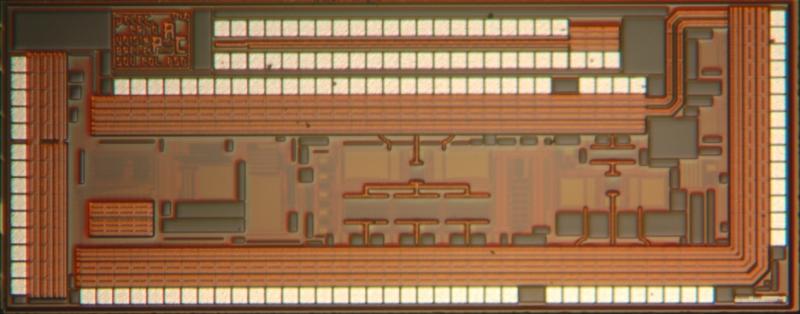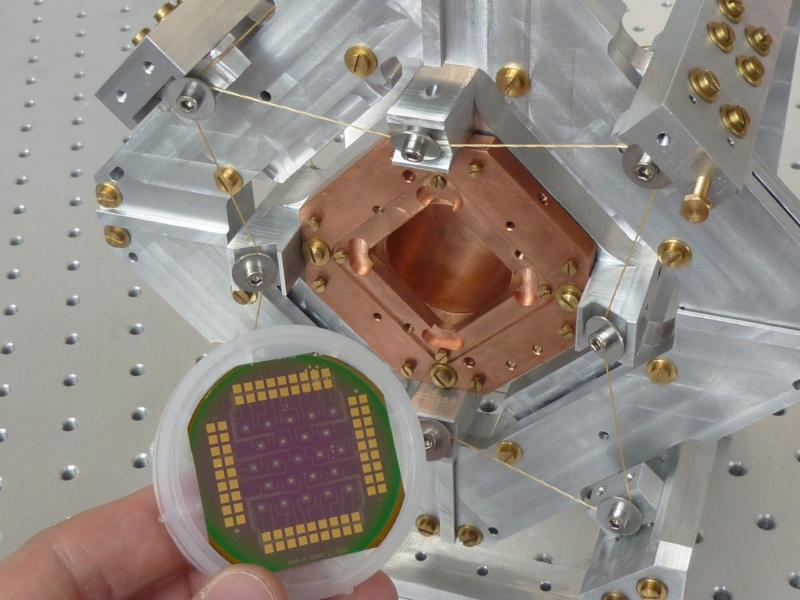In the framework of the DCMB and BSD projects, the APC is responsible for the R & D of the realization of the time-division multiplexing electronics and the amplification of the signals from large superconducting bolometer matrices as well as the characterization of the superconducting bolometers performed From Niobium and Silicon aliphatic alloys (NbSi). To meet these needs, a cryo-microelectronics team is developing specific integrated circuits (ASICs) operating at cryogenic temperatures (between 77K and 2K) using standard SiGe technology.


Left: Microphotograph of an ASIC operating at temperatures between 300 and 2K. This circuit is dedicated to the time multiplexing and the amplification of the signals coming from the Superconducting SQUIDS / Bolometers. Line: Diagram of the principle of the operation of the ASIC realized for the reading of 3x8 SQUIDs / superconducting bolometers
These ultra-low-noise circuits are designed to operate in close proximity to bolometer arrays for compact integration in cryostats.

Photograph of a matrix of thermometers NbSi superconductors before its integration in a thermo-electro-mechanical architecture
The APC has an ABmm vector analyzer and a cryogenic rod to test superconducting microwave components designed and simulated in the laboratory at very low temperatures.
These components operate at microwave frequencies: between 75 and 110 GHz. The vector analyzer allows to measure the transmission and reflection parameters of these components and thus to validate the electromagnetic simulations (realized with the CST Microwave Studio software).
Photograph (left) representing the vector analyzer in quasi-optical operation. Photograph (right) of a Niobium superconducting antenna test structure.
